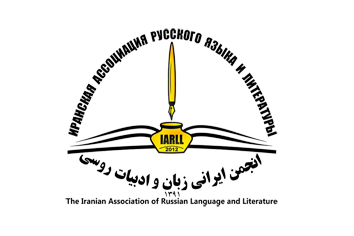STUDYING THE LANGUAGE OF “A JOURNEY BEYOND THE THREE SEAS” BY A. NIKITIN IN CLASSES IN THE DISCIPLINE “HISTORY OF THE RUSSIAN LITERARY LANGUAGE”
DOI:
https://doi.org/10.61186/IARLL.26.5Keywords:
Afanasy Nikitin, “A Journey Beyond the Three Seas”, History of the Russian Literary Language, Travel Style, Spoken Language, Lexical and Grammatical Features, Active/Interactive Learning MethodsAbstract
The article is devoted to the study of the language of “Voyage beyond Three Seas” by Afanasy Nikitin in classes at a university in the discipline “History of the Russian Literary Language”. One of the written monuments of the Moscow period is analyzed - “Voyage beyond Three Seas” by Afanasy Nikitin. It is shown that using examples from the text you can learn more about both Russian history, reflected in the monument, and about India. Linguistic innovation has been revealed: the work of Afanasy Nikitin does not correspond to the norms of the book-Slavic type of language and is based primarily on the colloquial speech of the Great Russian people. This is manifested in the predominance of words with East Slavic phonetic features over Church Slavonicisms, the use of colloquial syntactic constructions, and the reflection of changes in gramm “Voyage beyond Three Seas” atical structure in the text. It is noted that, along with Old Russian colloquial and vernacular words, Afanasy Nikitin uses Turkic, Persian, and Arabic vocabulary acquired during the trip. It is characteristic that he resorts to foreign language vocabulary even when he expresses his innermost thoughts about the Russian land, about love for his homeland and condemns the injustice of Russian nobles. It is emphasized that the distinctive feature of the style of “Voyage beyond Three Seas” is its laconicism, accuracy and strict factuality. In addition, interactive forms, methods and technologies of teaching are considered, providing for joint creative activity of the teacher and students while studying the language of Afanasy Nikitin’s work “Voyage beyond Three Seas” in the classroom.
Extended Abstract:This article positions Afanasy Nikitin’s “Voyage Beyond Three Seas” as a pivotal written monument of the Muscovite period, essential for study within the university discipline “History of the Russian Literary Language.” The work is presented not only as a historical document offering insights into 15th-century Russia and India but, more significantly, as a landmark of linguistic innovation that challenges the contemporary literary norms.
The central thesis of the article is that Nikitin’s work represents a profound departure from the established bookish-Slavonic type of language that dominated the literary tradition. Instead, its foundation is the living, colloquial speech of the Great Russian people. This linguistic shift is systematically demonstrated through several key features: the clear predominance of words with East Slavic phonetic characteristics over Church Slavonicisms, the consistent use of colloquial syntactic constructions, and the reflection of ongoing changes in the grammatical structure of the spoken language.
A defining and characteristic feature of the text is its unique lexicon. Alongside Old Russian colloquial and vernacular words, Nikitin extensively incorporates Turkic, Persian, and Arabic vocabulary acquired during his journey. Notably, the author emphasizes that Nikitin resorts to this foreign lexicon not merely to describe exotic realities but even when expressing his most intimate and heartfelt thoughts about the Russian land, his love for his homeland, and his criticism of the injustice of Russian nobles. This suggests a deep and functional integration of foreign borrowings into his personal narrative style.
Stylistically, the article underscores that the “Voyage” is defined by its laconicism, accuracy, and strict factuality, setting it apart from the more ornate and ecclesiastical literary styles of the era.
Pedagogically, Nikiforova advocates for the use of interactive forms, methods, and technologies in teaching this material. The approach is designed to foster joint creative activity between the teacher and students. The study of Nikitin’s language is thus not a passive exercise but an engaging process that involves analyzing textual examples to understand the dynamic interplay between native and foreign linguistic elements, ultimately illuminating the evolution of the Russian literary language during a formative period.
In conclusion, the analysis of “Voyage Beyond Three Seas” is presented as crucial for understanding the democratization of the literary language and the formation of new democratic styles, specifically the "travel style," during the period of the Russian nationality. The text provides invaluable material for comprehending the complex linguistic situation of the Muscovite state in the 14th–17th centuries.
References
1- Даль В.И. (2002). Толковый словарь живого великорусского языка: в 4-х т. Т. 1. М.: Рипол Классик.
2- Карамзин Н. М. (2024). История государства Российского в 12 т. Тома VII–VIII. М.: Издательство Юрайт. 325 с.
3- Караулов Ю.Н. (2010). Русский язык и языковая личность. М.: Издательство ЛКИ. 264 с.
4- Колесникова А.И., Самойлова Г.С. (2020). Изучение истории русского языка в тюркоязычной аудитории (На материале «Хожения за три моря» Афанасия Никитина) // Образование на русском языке: проблемы, поиски, перспективы Сборник статей по материалам международной научно-практической конференции Нижний Новгород, 15–24 декабря 2020 года. Отв. редактор Е.М. Дзюба. Нижний Новгород: Издательство: ФГБОУ ВО «Нижегородский государственный педагогический университет имени Козьмы Минина» (Нижний Новгород). С.181–184.
5- Лурье А.С. (1986). Русский «чужеземец» в Индии XV века // Хожение за три моря Афанасия Никитина. Л.: Наука. С.61–87.
6- Никифорова О.В. (2024). Новые технологии в преподавании дисциплины «История русского литературного языка» // Актуальные проблемы славянской филологии, культуры и журналистики. Коллективная монография памяти профессора Н.Д. Русинова. Нижний Новгород: Изд-во Нижегородского госуниверситета им. Н.И. Лобачевского. С.125–131.
7- Прокофьев Н.И. (1980). «Хожение за три моря» Афанасия Никитина // Русская речь. № 1. С. 110–116.
8- Торпакова Е.А., Королева Т.В. (2016). Оппозиция «своё» – «чужое» в «Хожении за три моря Афанасия Никитина» // Международный журнал социальных и гуманитарных наук. Т. 5. №1. С. 180–184.
9- Хожение за три моря Афанасия Никитина (1986). Л.: Наука. 231 с.
Downloads
Published
How to Cite
Issue
Section
License
Copyright (c) 2025 Issledovatel'skiy Zhurnal Russkogo Yazyka I Literatury

This work is licensed under a Creative Commons Attribution 4.0 International License.
![]()
"Creative Commons Attribution 4.0 International (CC-BY 4.0)"


